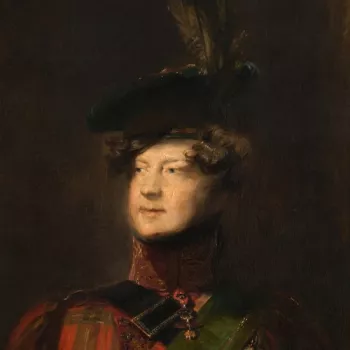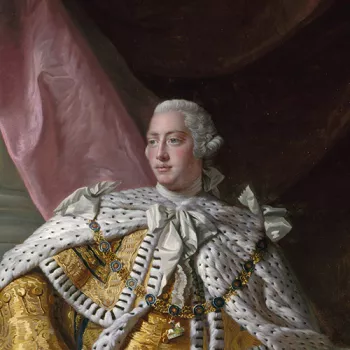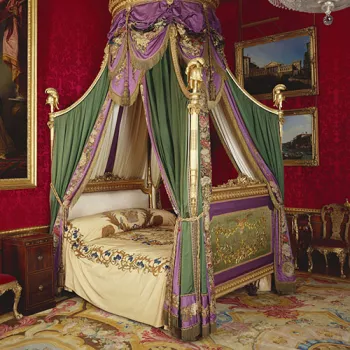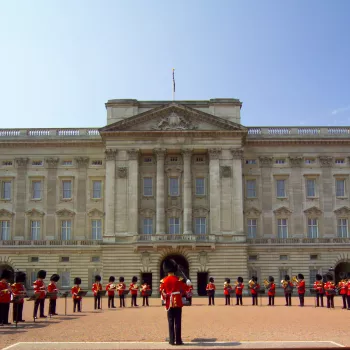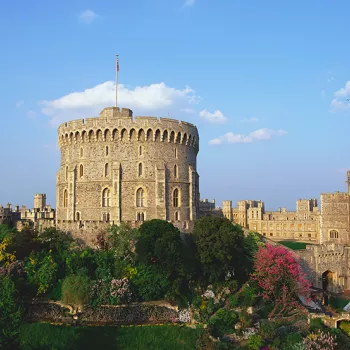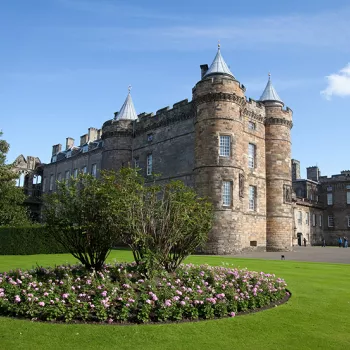Queen Charlotte
A look at the life and fashion of one of Britain’s most iconic queens.
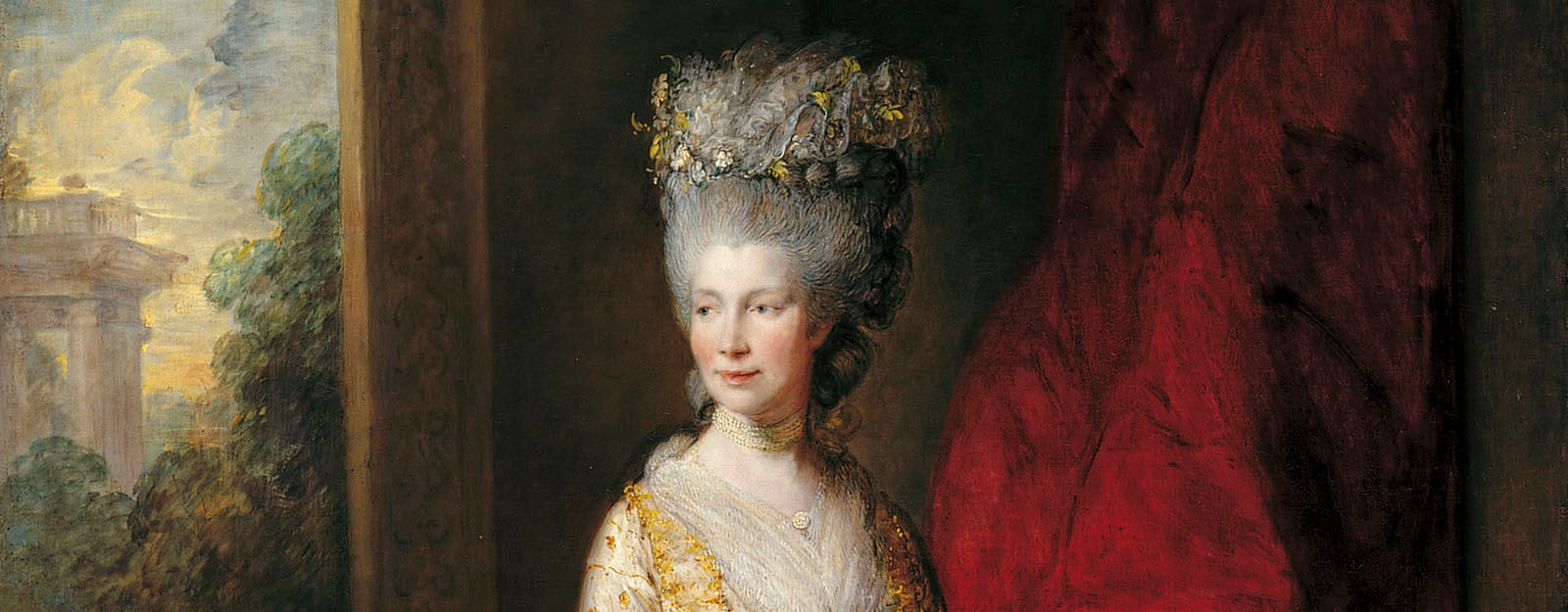
Reading time: 4 minutes
Queen Charlotte was born in 1744 in Mirow, a small town in present day Germany. She married George III in September 1761 and their joint coronation took place a fortnight later. Despite a quick courtship the marriage was happy, although it was disrupted by the king’s episodes of mental illness.
The couple remained devoted to each other, sharing a traditional, family-oriented outlook and wide range of interests. They were attentive parents to their 15 children, and the family was often seen walking around Windsor together.
Royal fashion
Although now admired for her elaborate gowns, Queen Charlotte was quite conservative in her attitude to fashion. Most famously, she insisted on women at court wearing the old-fashioned hoop underskirt which created a wide silhouette. This was long after it had passed from the fashionable wardrobe, and most women were adopting narrower neo-classical gowns.
She also attempted to introduce a style of dress known as a ‘stiff-bodied’ gown as mandatory court wear. But the attempt was unsuccessful.
While Queen Charlotte insisted on an old-fashioned formality at court events, she did sometimes wear styles of clothing that were at the forefront of fashion. She is shown wearing a new inverted triangle stomacher (known later as a ‘zone front’) in a painting of 1776, whereas this style is more commonly seen in the 1780s. The stomacher was a V or U-shaped panel to cover the opening of the bodice of the dress.
Queen Charlotte also understood her role in supporting domestic textile industries. She extensively patronised English silk makers and in 1765 specifically requested all ladies of the court wear only silk from the Spitalfields area of London.
Famous jewellery
Queen Charlotte’s magnificent collection of jewellery was widely admired and rightly famous. It included the jewels from her own family with which she arrived in England as well as those inherited by George III from his father.
One of the most noteworthy pieces in the queen’s jewellery collection was a diamond stomacher. This was valued at £60,000, equal to nearly £10 million today. The stomacher was constructed from small diamonds, overlaid with a leaflike design of larger stones. It was worn for both the royal wedding and the coronation. At her wedding the bride must have presented a glittering spectacle, with earrings, cap, necklace and clasps all made of diamonds too.
On their wedding day George III presented Queen Charlotte with several gifts, including a ring set with a miniature of himself beneath a large flat-cut diamond. She wore on it on the little finger of her right hand.
Fashionable hair
Despite her relatively conservative attitude to clothing, Queen Charlotte did follow fashions in hairstyles closely. This included the heart-shaped styles of the mid 1770’s. In this distinctive style the hair widens at the peak on both sides. Fashion trends changed quickly though; within a few years the style had changed to be more oval shaped.
Queen Charlotte used a hairdresser called John Baptist Suardy for several decades. On one occasion he requested payment of £200 to attend on her for one summer season. This is the equivalent of around £27,000 today. But the cost-conscious queen declined, deciding instead she would pay on occasions as required. When another hairdresser William Duncan later replaced him, she was unimpressed as she felt he had ‘no taste’.
The Queen’s interests
As well as being a great patron of the arts, Queen Charlotte was also a keen and highly skilled needlewoman herself. She was also an enthusiast of the fashionable openwork techniques of netting and knotting.
She was a talented musician and played the harpsichord, which was a popular instrument at the time. Books were another of the queen’s interests. Her large library included volumes on botany, literature, and the theatre.




